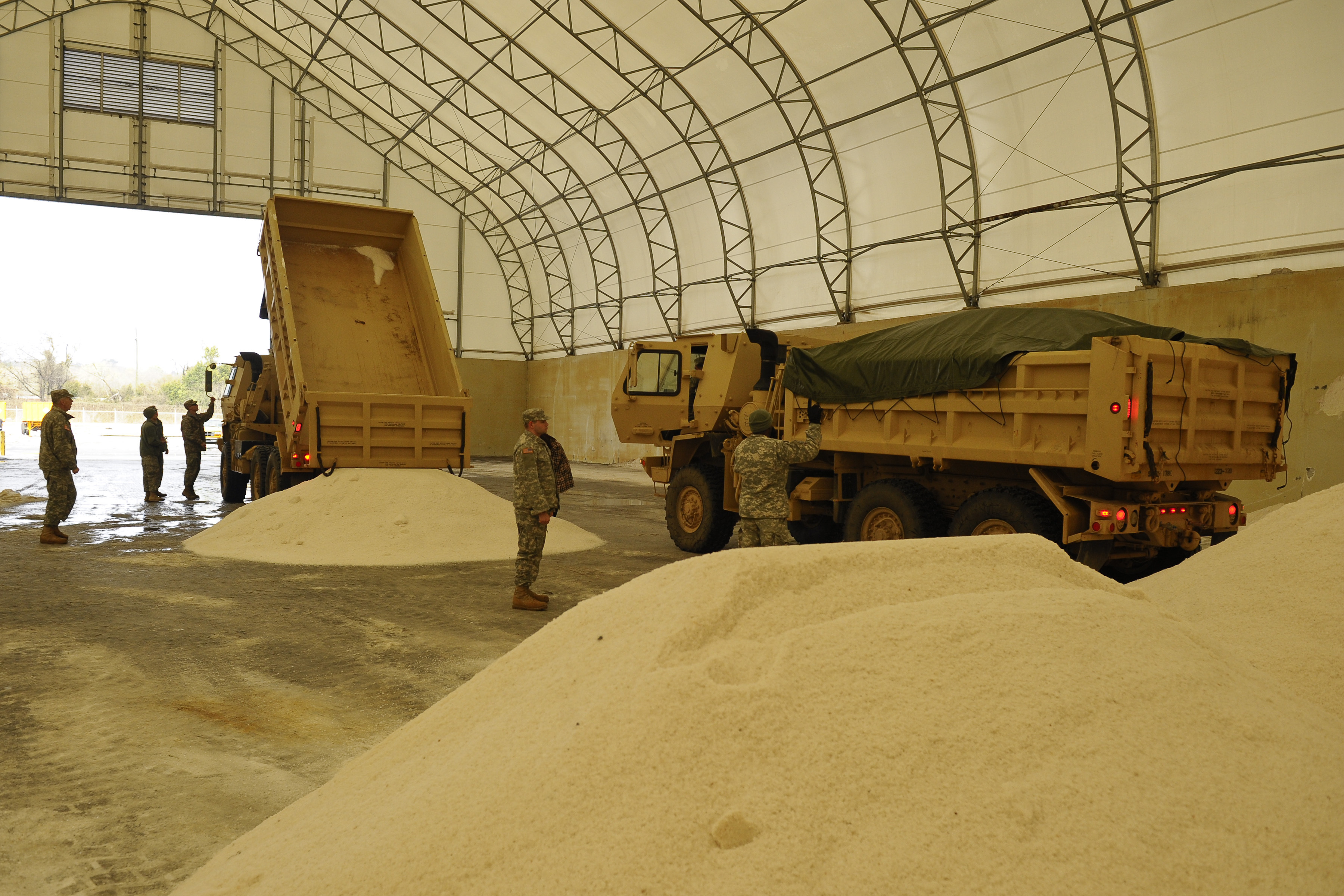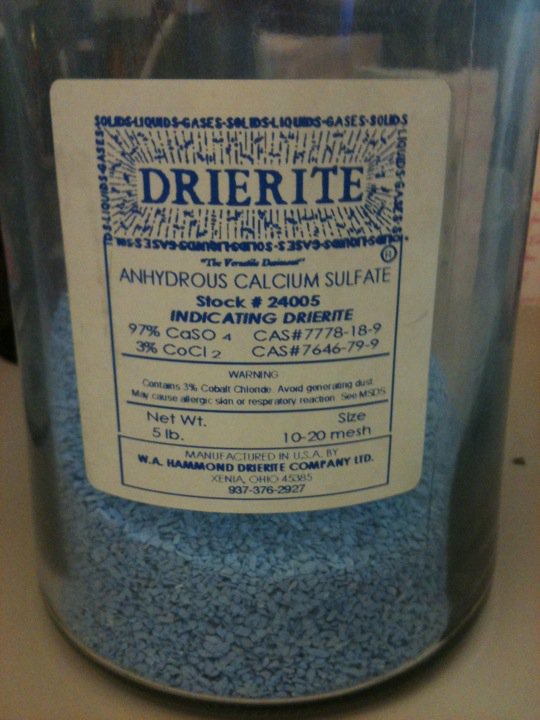|
Pyrotechnic Colorants
A pyrotechnic colorant is a chemical compound which causes a flame to burn with a particular color. These are used to create the colors in pyrotechnic compositions like fireworks and colored fires. The color-producing species are usually created from other chemicals during the reaction. Metal salts are commonly used; elemental metals are used rarely (e.g. copper for blue flames). The color of the flame is dependent on the metal cation; the anion of the salt has very little direct influence. The anions however influence the flame temperature, both by increasing it (e.g. nitrates, chlorates) and decreasing it (e.g. carbonates, oxalates), indirectly influencing the flame brightness and brilliancy. For temperature-decreasing additives, the limit of colorant may be about 10–20 wt.% of the composition. Some common examples are: Radiating species Despite the wide numbers of metal ion donors, they serve to form only a few atomic and molecular species that are useful as light e ... [...More Info...] [...Related Items...] OR: [Wikipedia] [Google] [Baidu] |
Strontium Chloride
Strontium chloride (SrCl2) is a salt of strontium and chloride. It is a "typical" salt, forming neutral aqueous solutions. As with all compounds of strontium, this salt emits a bright red colour in flame, and is commonly used in fireworks to that effect. Its properties are intermediate between those for barium chloride, which is more toxic, and calcium chloride. Preparation Strontium chloride can be prepared by treating aqueous strontium hydroxide or strontium carbonate with hydrochloric acid: : Crystallization from cold aqueous solution gives the hexahydrate, SrCl2·6H2O. Dehydration of this salt occurs in stages, commencing above . Full dehydration occurs at . Structure In the solid state, SrCl2 adopts a fluorite structure. In the vapour phase the SrCl2 molecule is non-linear with a Cl-Sr-Cl angle of approximately 130°. This is an exception to VSEPR theory which would predict a linear structure. Ab initio calculations have been cited to propose that contributions from d o ... [...More Info...] [...Related Items...] OR: [Wikipedia] [Google] [Baidu] |
Barium Chlorate
Barium chlorate, Ba(ClO3)2, is the barium salt of chloric acid. It is a white crystalline solid, and like all soluble barium compounds, irritant and toxic. It is sometimes used in pyrotechnics to produce a green colour. It also finds use in the production of chloric acid. Reactions Synthesis Barium chlorate can be produced through a double replacement reaction between solutions of barium chloride and sodium chlorate: : After concentrating and cooling the resulting mixture, barium chlorate precipitates. This is perhaps the most common preparation, exploiting the lower solubility of barium chlorate compared to sodium chlorate. The above method does result in some sodium contamination, which is undesirable for pyrotechnic purposes, where the strong yellow colour of sodium can easily overpower the green of barium. Sodium-free barium chlorate can be produced directly through electrolysis: : It can also be produced by the reaction of barium carbonate with boiling ammonium ... [...More Info...] [...Related Items...] OR: [Wikipedia] [Google] [Baidu] |
Barium Chloride
Barium chloride is an inorganic compound with the formula . It is one of the most common water-soluble salts of barium. Like most other water-soluble barium salts, it is a white powder, highly toxic, and imparts a yellow-green coloration to a flame. It is also hygroscopic, converting to the dihydrate , which are colourless crystals with a bitter salty taste. It has limited use in the laboratory and industry. Preparation On an industrial scale, barium chloride is prepared via a two step process from barite (barium sulfate). The first step requires high temperatures. : The second step requires reaction between barium sulfide and hydrogen chloride: : or between barium sulfide and calcium chloride: : In place of HCl, chlorine can be used. Barium chloride is extracted out from the mixture with water. From water solutions of barium chloride, its dihydrate () can be crystallized as colorless crystals. Barium chloride can in principle be prepared by the reaction between barium hydrox ... [...More Info...] [...Related Items...] OR: [Wikipedia] [Google] [Baidu] |
Cryolite
Cryolite ( Na3 Al F6, sodium hexafluoroaluminate) is a rare mineral identified with the once-large deposit at Ivittuut on the west coast of Greenland, mined commercially until 1987. It is used in the reduction ("smelting") of aluminium, in pest control, and as a dye. History Cryolite was first described in 1798 by Danish veterinarian and physician (1740–1801), from rock samples obtained from local Inuit who used the mineral for washing their hides; the actual source of the ore was later discovered in 1806 by the explorer Karl Ludwig Giesecke. who found the deposit at Ivigtut (old spelling) and nearby Arsuk Fjord, Southwest Greenland, where it was extracted by Øresund Chemical Industries. The name is derived from the Greek words (), and (). The Pennsylvania Salt Manufacturing Company used large amounts of cryolite to make caustic soda and fluorine compounds, including hydrofluoric acid at its Natrona, Pennsylvania, works, and at its integrated chemical plant in Cor ... [...More Info...] [...Related Items...] OR: [Wikipedia] [Google] [Baidu] |
Sodium Nitrate
Sodium nitrate is the chemical compound with the chemical formula, formula . This alkali metal nitrate salt (chemistry), salt is also known as Chile saltpeter (large deposits of which were historically mined in Chile) to distinguish it from ordinary saltpeter, potassium nitrate. The mineral form is also known as nitratine, nitratite or soda niter. Sodium nitrate is a white deliquescent solid very soluble in water. It is a readily available source of the nitrate anion (NO3−), which is useful in several reactions carried out on industrial scales for the production of fertilizers, pyrotechnics, smoke bombs and other explosives, glass and pottery vitreous enamel, enamels, food preservatives (esp. meats), and rocket propellant, solid rocket propellant. It has been mined extensively for these purposes. History The first shipment of saltpeter to Europe arrived in England from Peru in 1820 or 1825, right after that country's independence from Spain, but did not find any buyers and was ... [...More Info...] [...Related Items...] OR: [Wikipedia] [Google] [Baidu] |
Sodium Oxalate
Sodium oxalate, or disodium oxalate, is a chemical compound with the chemical formula . It is the sodium Salt (chemistry), salt of oxalic acid. It contains sodium cations and oxalate anions . It is a white, crystalline, odorless solid, that decomposes above 290 °C. Sodium oxalate can act as a reducing agent, and it may be used as a primary standard for standardizing potassium permanganate () solutions. The mineral form of sodium oxalate is natroxalate. It is only very rarely found and restricted to extremely Soil salinity#Sodic soils, sodic conditions of ultra-alkaline pegmatites. Preparation Sodium oxalate can be prepared through the Neutralization (chemistry), neutralization of oxalic acid with sodium hydroxide (NaOH) in a 1:2 acid-to-Base (chemistry), base Mole (unit), molar ratio. Evaporation yields the anhydrous oxalate that can be thoroughly dried by heating to between 200 and 250 °C. Half-neutralization can be accomplished with NaOH in a 1:1 ratio which produces , Acid ... [...More Info...] [...Related Items...] OR: [Wikipedia] [Google] [Baidu] |
Sodium Chloride
Sodium chloride , commonly known as Salt#Edible salt, edible salt, is an ionic compound with the chemical formula NaCl, representing a 1:1 ratio of sodium and chloride ions. It is transparent or translucent, brittle, hygroscopic, and occurs as the mineral halite. In its edible form, it is commonly used as a condiment and curing (food preservation), food preservative. Large quantities of sodium chloride are used in many industrial processes, and it is a major source of sodium and chlorine compounds used as feedstocks for further Chemical synthesis, chemical syntheses. Another major application of sodium chloride is deicing of roadways in sub-freezing weather. Uses In addition to the many familiar domestic uses of salt, more dominant applications of the approximately 250 million tonnes per year production (2008 data) include chemicals and de-icing.Westphal, Gisbert ''et al.'' (2002) "Sodium Chloride" in Ullmann's Encyclopedia of Industrial Chemistry, Wiley-VCH, Weinheim . Chem ... [...More Info...] [...Related Items...] OR: [Wikipedia] [Google] [Baidu] |
Sodium Carbonate
Sodium carbonate (also known as washing soda, soda ash, sal soda, and soda crystals) is the inorganic compound with the formula and its various hydrates. All forms are white, odourless, water-soluble salts that yield alkaline solutions in water. Historically, it was extracted from the ashes of plants grown in sodium-rich soils, and because the ashes of these sodium-rich plants were noticeably different from ashes of wood (once used to produce potash), sodium carbonate became known as "soda ash". It is produced in large quantities from sodium chloride and limestone by the Solvay process, as well as by carbonating sodium hydroxide which is made using the chloralkali process. Hydrates Sodium carbonate is obtained as three hydrates and as the anhydrous salt: * sodium carbonate decahydrate ( natron), Na2CO3·10H2O, which readily effloresces to form the monohydrate. * sodium carbonate heptahydrate (not known in mineral form), Na2CO3·7H2O. * sodium carbonate monohydrate ( thermonatr ... [...More Info...] [...Related Items...] OR: [Wikipedia] [Google] [Baidu] |
Sodium Bicarbonate
Sodium bicarbonate ( IUPAC name: sodium hydrogencarbonate), commonly known as baking soda or bicarbonate of soda (or simply “bicarb” especially in the UK) is a chemical compound with the formula NaHCO3. It is a salt composed of a sodium cation ( Na+) and a bicarbonate anion (). Sodium bicarbonate is a white solid that is crystalline but often appears as a fine powder. It has a slightly salty, alkaline taste resembling that of washing soda ( sodium carbonate). The natural mineral form is nahcolite, although it is more commonly found as a component of the mineral trona. As it has long been known and widely used, the salt has many different names such as baking soda, bread soda, cooking soda, brewing soda and bicarbonate of soda and can often be found near baking powder in stores. The term ''baking soda'' is more common in the United States, while ''bicarbonate of soda'' is more common in Australia, the United Kingdom, and New Zealand. Abbreviated colloquial forms such as '' ... [...More Info...] [...Related Items...] OR: [Wikipedia] [Google] [Baidu] |
Charcoal
Charcoal is a lightweight black carbon residue produced by strongly heating wood (or other animal and plant materials) in minimal oxygen to remove all water and volatile constituents. In the traditional version of this pyrolysis process, called charcoal burning, often by forming a charcoal kiln, the heat is supplied by burning part of the starting material itself, with a limited supply of oxygen. The material can also be heated in a closed retort. Modern charcoal briquettes used for outdoor cooking may contain many other additives, e.g. coal. The early history of wood charcoal production spans ancient times, rooted in the abundance of wood in various regions. The process typically involves stacking wood billets to form a conical pile, allowing air to enter through openings at the bottom, and igniting the pile gradually. Charcoal burners, skilled professionals tasked with managing the delicate operation, often lived in isolation to tend their wood piles . Throughout histo ... [...More Info...] [...Related Items...] OR: [Wikipedia] [Google] [Baidu] |
Calcium Sulfate
Calcium sulfate (or calcium sulphate) is an inorganic salt with the chemical formula . It occurs in several hydrated forms; the anhydrous state (known as anhydrite) is a white crystalline solid often found in evaporite deposits. Its dihydrate form is the mineral gypsum, which may be dehydrated to produce bassanite, the hemihydrate state. Gypsum occurs in nature as crystals ( selenite) or fibrous masses ( satin spar), typically colorless to white, though impurities can impart other hues. All forms of calcium sulfate are sparingly soluble in waterFranz Wirsching "Calcium Sulfate" in Ullmann's Encyclopedia of Industrial Chemistry, 2012 Wiley-VCH, Weinheim. and cause permanent hardness when dissolved therein. Hydration states Calcium sulfate occurs at three levels of hydration with different crystallographic structures: anhydrous, dihydrate, and hemihydrate. The anhydrous ( anhydrite) crystallizes as an tightly-bound orthohombic lattice with space group Pnma, in which each ... [...More Info...] [...Related Items...] OR: [Wikipedia] [Google] [Baidu] |






